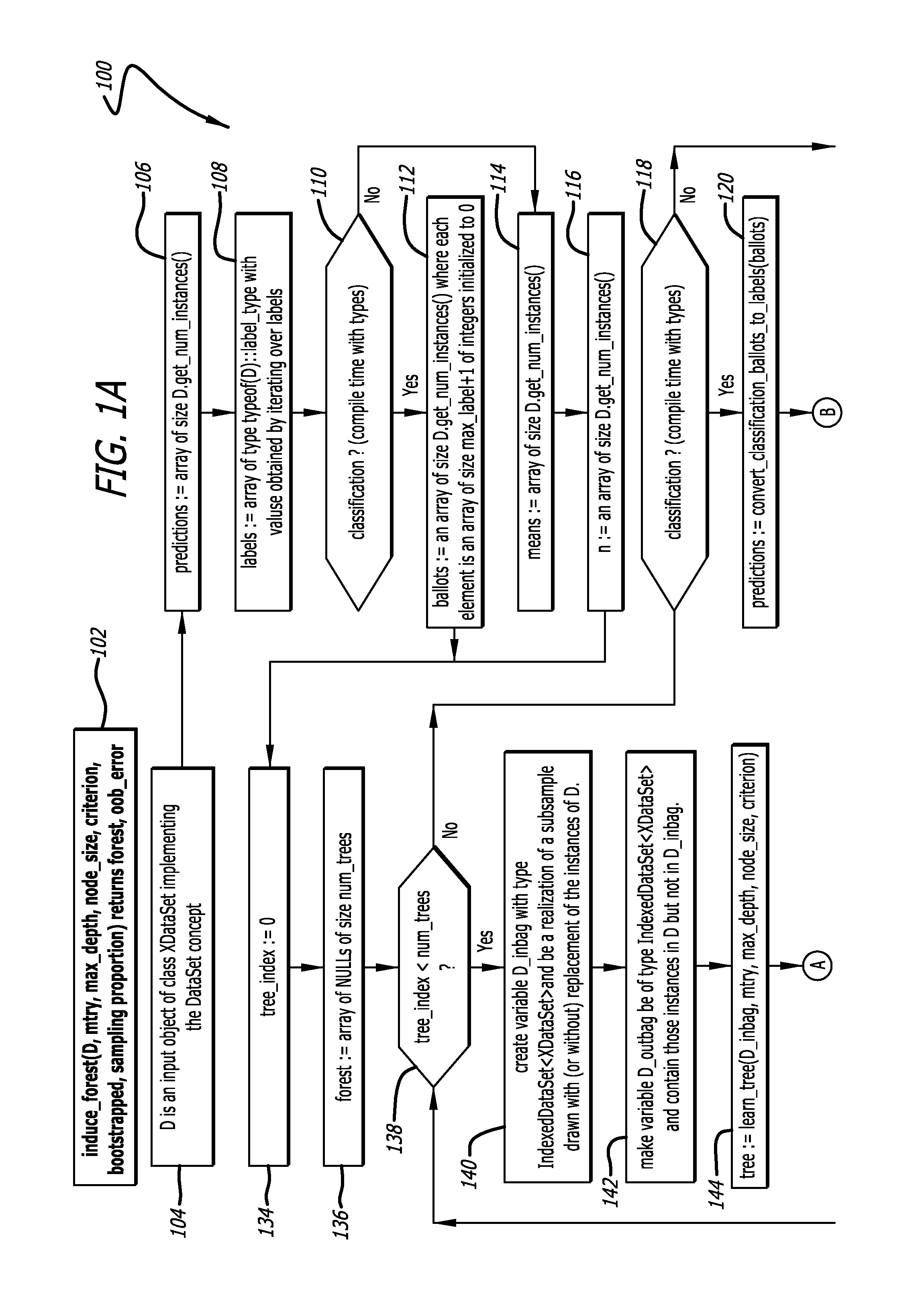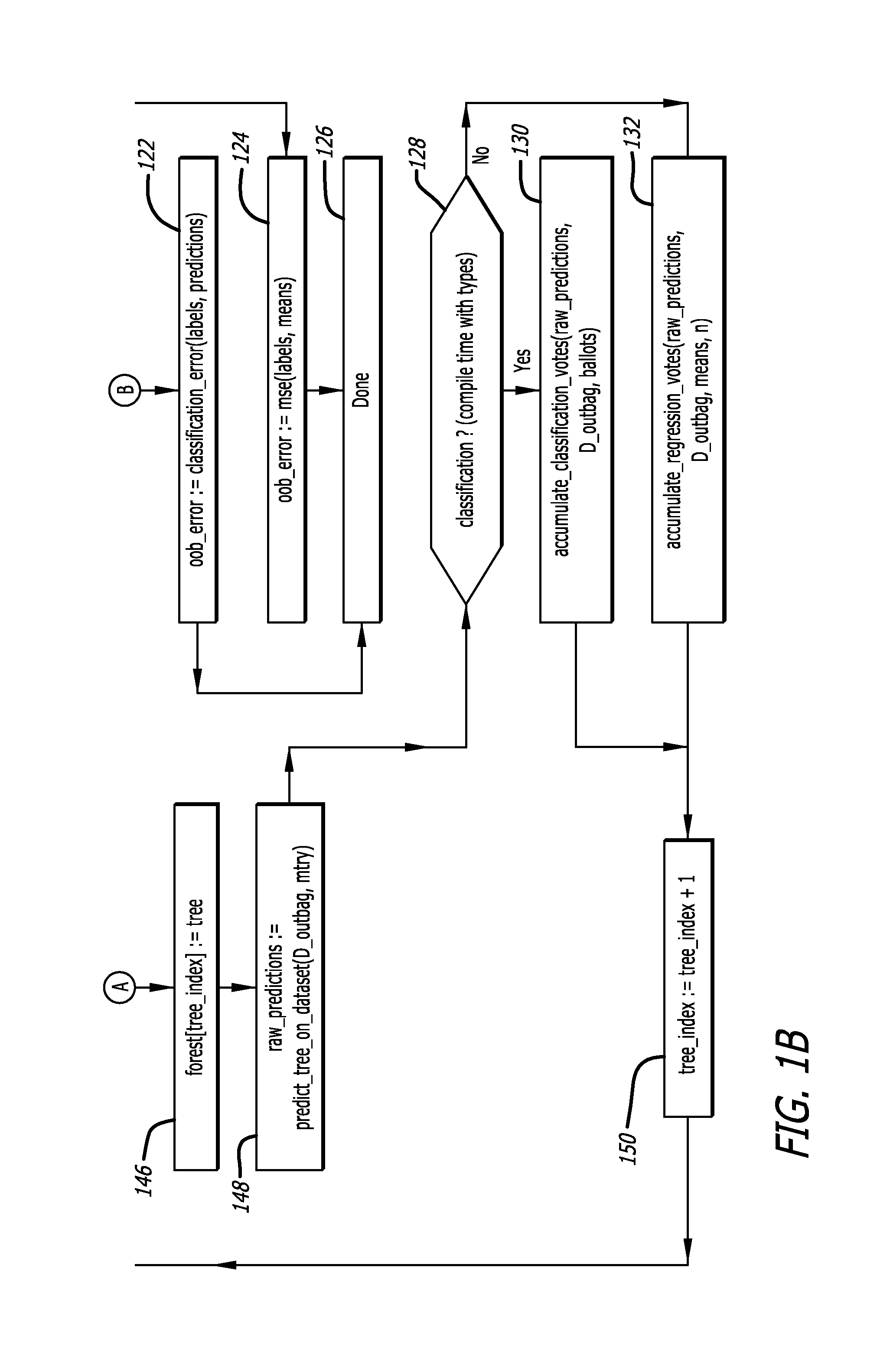Scalable, memory-efficient machine learning and prediction for ensembles of decision trees for homogeneous and heterogeneous datasets
a dataset and decision tree technology, applied in machine learning, instruments, computing, etc., can solve the problems of slowing down big data analytics, affecting the speed and accuracy of machine learning and prediction, and reducing so as to reduce the number of clock cycles and memory usage, improve the speed and accuracy, and slow down the effect of big data analytics
- Summary
- Abstract
- Description
- Claims
- Application Information
AI Technical Summary
Benefits of technology
Problems solved by technology
Method used
Image
Examples
Embodiment Construction
[0025]In the following description of the present invention reference is made to exemplary embodiments illustrating the principles of the present invention and how it is practiced. Other embodiments will be utilized to practice the present invention and structural and functional changes will be made thereto without departing from the scope of the present invention.
[0026]The present invention provides approaches to implementing a learning ensemble of decision trees in a single-machine environment in which inlining to optimize relevant material for compilation by integrating function code into a caller's code at compilation, ensuring a contiguous buffer arrangement for necessary information to be compiled, and configuring one or more mechanisms for defining and enforcing constraints on types, known as C++ concepts, are techniques utilized to maximize memory usage and minimize speed constraints. Each of these applications is discussed in further detail herein. Each of inlining, buffer ...
PUM
 Login to View More
Login to View More Abstract
Description
Claims
Application Information
 Login to View More
Login to View More - R&D
- Intellectual Property
- Life Sciences
- Materials
- Tech Scout
- Unparalleled Data Quality
- Higher Quality Content
- 60% Fewer Hallucinations
Browse by: Latest US Patents, China's latest patents, Technical Efficacy Thesaurus, Application Domain, Technology Topic, Popular Technical Reports.
© 2025 PatSnap. All rights reserved.Legal|Privacy policy|Modern Slavery Act Transparency Statement|Sitemap|About US| Contact US: help@patsnap.com



